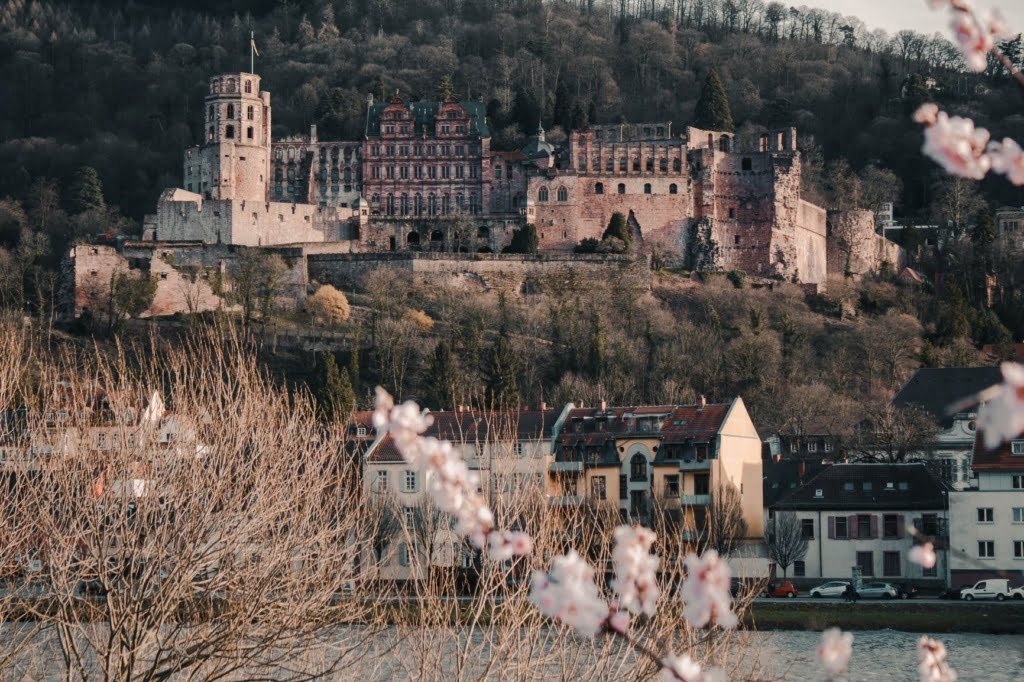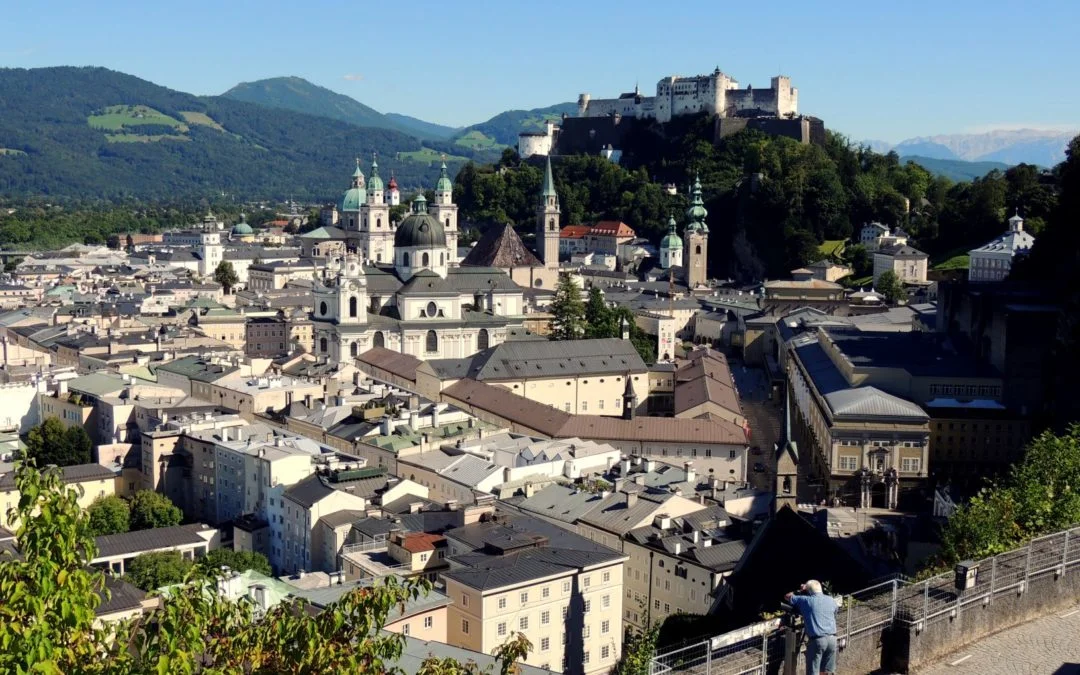In today’s world, it very common to see a scene of modernity. Fast passed cars on large highways zoom past large concrete buildings. This is the case for much of the world, from the high tech and light-filled bustling cities of East Asia to the highly industrialized and ever-expanding cities of the Americas. The modern world, with all of its hum and bum, are all but inescapable.
We can still, though, visit the past as a quick escape from the present. The cities of old can be a way to relax and detach yourself from a busy world of today. These cities serve more purpose than just being old. They have a lot to offer besides history and old buildings. They’re a source of rich culture, a new perspective of the world, and even a way to break the monotony of big cities. Europe has many of these cities, and it’s worth spending a week or two, exploring one or more of these cities. Here are a few to get started. Kati and I love exploring these ancient cities as well as others throughout the world. Coming from Europe, Kati especially enjoys taking a new look at cities that she has known as a child. We both love discovering and exploring historical cities and have made it a passion of ours when we travel.
Bruges
To the west of Brussels is a fairytale land of winding canals and cobblestone streets. Originally built as a fort in 865, the city of Bruges became a center of commerce, owing in large part to an inlet that led close to the city. Thus, canals were built through and around the city, as well as to neighboring Ghent. Despite going through numerous wars and facing destruction in the world wars, most of the city has preserved its gothic and baroque charm as well as its laid-back serenity.
Bruges is probably most famous for two things. Firstly, it’s central square, simply known as Markt, is a striking collection of classical and gothic business buildings surrounding a seasonal marketplace. Its awe-inspiring centerpiece, however, is the medieval Belfry, a commanding tower built in and maintained since the 12th century. This and the nearby Cranenburg House are key postcard locations. Besides this, a major feature of the city are its canals. Between cobblestone streets line with brick homes are serene waterways that you wouldn’t find in more famous places like Amsterdam and Venice. Owing to its laid-back nature, the fact that it’s not busy combined with the well-preserved building styles truly transport you to a time immemorial.

Bruges is spectacular to visit year round.
Salzburg
Though hardly a blast from the past, Salzburg holds in it a historic heart in an otherwise growing city. The city’s old town, which is nearly inaccessible to cars by the way, was the backdrop of the highly famous 1965 film Sound of Music. The earliest known record of the current old town dates back to 696 with the construction of St Peter’s Abbey, with the hilltop Festung Hohensalzburg built in 1077. These to make up the major landmarks in Salzburg old town. You can opt to take a guided tour of the Sound of Music filming locations, though the church featured in the last few scenes is Nonnberg Abbey and is the only one located in the old town.
Salzburg is also known as the birthplace of Mozart, and thus a common delicacy is a chocolate snack filled with marzipan and other chocolate-related fillings called Mozart balls. These are easy to find along the Getreidestrasse, one of the main streets. This closely-knit road features many shops that still retain their old signage where the use of images is heavy due to the literacy rate back then. Great finds here include chocolate shops, a widely famous sausage stall, and the Mozart museum.
Prague
One of our favorite cities in one of our favorite countries in Europe. The heart of Bohemia is a charming gothic city that refuses to yield to the pressures of time. This city is Prague, and it can trace its roots all the way back to the paleolithic age as a reference to a city called “Boihaem.” By the 9th century, the first definitive sign of Prague, the Prague Castle, was built by a settlement by the river. From here, the Old Town, became a heavily fortified trade city starting in the 1100s. The King of Bohemia would later build Mala Strana (Lesser Town) as a royal settlement in the 1200s. To this day, it houses several government offices and residences.
Sitting on opposite banks of the Vltava River, either of these are enough to capture the old Slavic charm of Prague. Connecting the two neighborhoods is Charles Bridge, a gothic pedestrian bridge that is famous among tourists. Charles Bridge is easily accessible from Prague Castle, which houses the crown jewels of the King of Bohemia and has the St Vita Cathedral as a center point. From here, Nerudova Street will be easily found, which is filled with shops and restaurants. One thing you should try is Trdelnik, a cake usually baked on a spit and is topped with walnuts and chocolate. Sometimes, it comes as a hollow tube and sometimes it comes as a cone. Across the river, the Old Town offers more cultural spots. At its heart is the Old Town Square, where you can find the occasional festival or market. Found around the square are the Tyn Cathedral and the Astronomical Clock, an 800-year-old mechanical clock where people gather to watch the bells ring like you would a changing of the guards ceremony. Prague is a gateway to a culture not many would know of but can easily grow accustomed to.

In the heart of Bohemia, Prague has a wonderful feel to the city.
Rome
Rome is another one of our favorite cities to visit and explore. We were in Rome while they were digging a subway and had to stop because they came across some ruins that needed to be excavated. There is history on every corner. When in Rome, do as the Romans do. So, if it’s to live life with the ghosts of a shining past around you, then you best do that. Remnants of the former Roman empire can be found all throughout the city. Much of the old city center is centered close by the Vatican and is bound by the Holy See on the west and the Forum ruins to the east. You can, however, trace the old walls of Rome, which wrap around much of the city and spans as far west as the tip of the Vatican and as far east as the train station, already part of what is considered the modern center. It extends further out as an aqueduct and can be seen all the way in the farmlands. Simply following this wall lets you touch several major sights. Perhaps the most definitive ghost of Rome’s past is the ruins, with the Coliseum being a major icon not just of the city but the entire country.
Being at any point within the walls will transport you to Italy at its heart, at least for the southern half. The parks and plazas are uncountable, with a few notable ones being the Trevi Fountain, which the movie When in Rome centers its plot on, Piazza del Popolo, and Altare della Patria. The ruins are also worth paying a visit, being a visible piece of history that proved pivotal for the world to come after it. You can opt to do anything you want in Rome – eat pizza, try some gelato by the River Tiber, even visit one of the many museums. But the real treat to visiting Rome is simply wandering around, exploring a world that refuses to be forgotten.
Heidelberg
I love visiting Europe and exploring Germany while visiting family. Kati is re-discovering many incredible places that she visiting while younger. Overall, we love to explore Germany and find new adventures in this ancient land. Deep in the Neckar river valley, within the fantastical forest land of Odenwald, lies the romantic city of Heidelberg, a city of fig trees and philosophers. Once a Celtic fort, the city was first established the village of Bergheim as early as the 700s, it slowly grew from there under influence of the local diocese. By 1386, the main claim to fame of the city, University of Heidelberg, was established. It still stands to this day and was consequential throughout history. Heidelberg was largely spared from the destruction of World War II and was able to retain much of its past, a contrast made more apparent when compared to neighboring Manheim.
As said, Heidelberg is famous for being a romantic city. It’s unique topography and forest climate provide a picturesque backdrop against the untouched Altstadt, or old town. Towering above the city and visible from every point is Heidelberg Castle, a gothic-renaissance palace that makes for the perfect vantage point. Altstadt also features the Marktplatz, where fresh local delicacies are occasionally sold after Sunday church. A few minutes’ walk away would be the old bridge, untouched except for minor repairs. This bridge would eventually lead to the north bank of the Neckar, where the beer meadow and Philosopher’s walk can be found. All these spots present the perfect place for a postcard, and probably have been featured in postcards themselves.

Towering above the city and visible from every point is Heidelberg Castle
Valletta
Resting on a prominent peninsula, the capital of Malta is a fort stuck in time. Based around Fort St Elmo, the city sprang to life starting from the fort’s construction in 1552 with the outer walls being completed as late as 1856. The entire structure still stands today and is even surrounded by several other forts, forming a massive citadel of sorts. The entire city is listed as a UNESCO World Heritage Site.
At first glance, the city will appear as a sea of beige tones – conglomeration of Mediterranean and Arabic styles brought about by its past. Valetta itself is not the main tourist spot of Malta, so expect low prices and relatively quiet streets. If you’re not one for nightlife, then the best evening spots would be along the Valletta Waterfront. Here you can find various restaurants, shops, and bistros housed in a former dockyard. Explore the rest of the city for bespoke hole-in-the-wall bakeries and perfect sunrise/sunset views atop many of the city’s walls. Visit the nearby city of Birgu, which is similar to but much smaller than Valletta. Here you can find Fort St. Angelo which offers an unadulterated view of the city and the sea.
Vienna
Vienna is incredible. As we fly in and out of Vienna quite often, we typically take extra time to explore and discover this city. And it never disappoints. Vienna, The City of Music, was once the capital of the Austrian-Hungarian Empire. The city itself can be traced all the way back as a Roman settlement. First mention of the city was around 881, while it was not known as Vienna, the capital of Austria until 1155, and was not fully a city until 1278. Since then, the city has seen an explosion of art and culture, having been an imperial capital once, and being host to the likes of Mozart, Beethoven, Klimt, among other famous musicians and artists.
This earned Vienna the moniker of The City of [classical] Music. As a testament to this, filled with opera houses, theaters, and museums, most surrounding the old town forming a road called Ringstrasse, which was once the city wall. One famous museum stands out, known as the Belvedere Palace, housing Gustav Klimt’s The Kiss, and one of the most famous portraits of Napoleon Bonaparte. Another must-see palace is the Schloss Schonbrunn, which was Marie Antoinette’s inspiration for building the Versailles. The city center also features a uniquely European atmosphere, where at its heart is Stephansdom, a medieval cathedral with its roof decorated with the city seal. From Stephanplatz, head west where several market stalls can be found all the way to Ringstrasse. Just outside the city is also the Nachsmarkt, which despite the name, is a day-long market featuring fresh foods and produce.

Veinna is a wonderful city. Head to a coffee shop, then to the museums. It is a great walking city.
Final Notes
It’s worth noting that these aren’t the only old postcard-perfect cities in Europe. There are dozens, maybe hundreds. They’re in the old islands of Greece, in the walled cities of Northern Italy, in the vast fields of France, and in the matorrals of Iberia. There’s nothing wrong with visiting big cities. After all, travel will always be an experience worth living. But we encourage you to go beyond the easy and familiar, to venture to these cities, and appreciate the stories they have to tell before time decides to take them away. This, at least for some, is a good enough reason to take the plunge.
Related Posts
I weep for America
I woke up this morning feeling a sense of doom in the world. I feel that I do not even know the country that I live in any longer. As someone that travels throughout the world and tries to make connections with the people and wildlife that I come across, it was incredible that America elected someone like Donald Trump. It is incredible that people would vote against their own best interest and seem to be happy about it. It is incredible how many racist, misogynistic and uneducated people there are in America.
Conservation Champions: 5 Exemplary Wildlife Preservation Efforts Making a Difference
Conservation Champions highlights five remarkable wildlife preservation efforts that are truly making a difference. From protecting endangered species to restoring habitats, these initiatives showcase the dedication and innovation of individuals and organizations committed to safeguarding our planet’s biodiversity. Discover the inspiring stories behind these exemplary conservation projects and the impact they have on our natural world.
Beyond the Big Five: Discovering Wildlife Wonders in Non-African Safari Destinations
“Beyond the Big Five” takes you on a thrilling journey to lesser-known safari destinations outside of Africa. From the lush rainforests of the Amazon to the vast plains of the Pantanal in South America, this article uncovers the hidden treasures of wildlife wonders that await adventurous travelers seeking a unique and unforgettable safari experience.











0 Comments